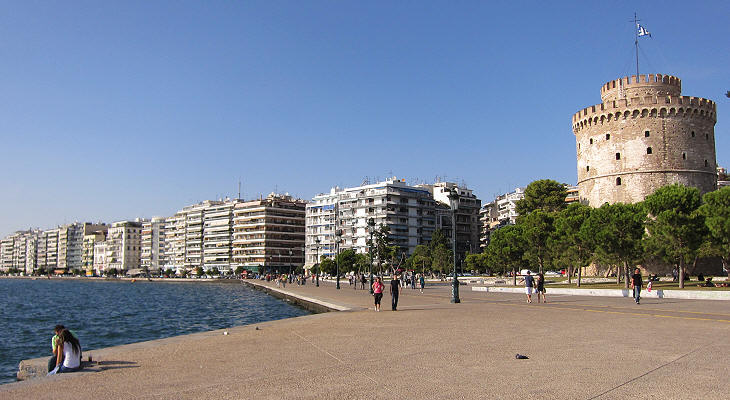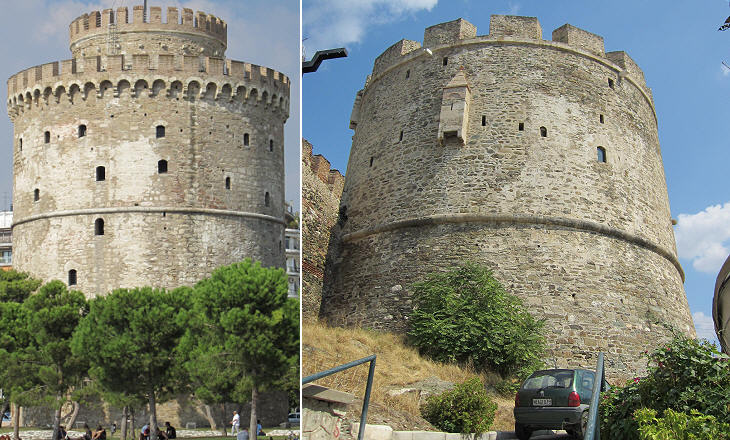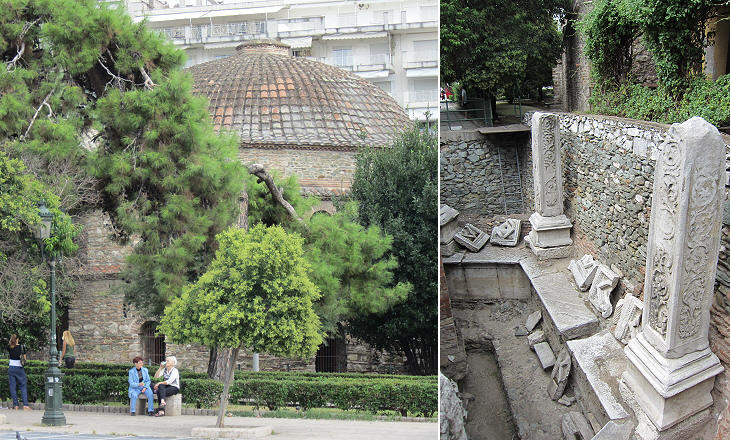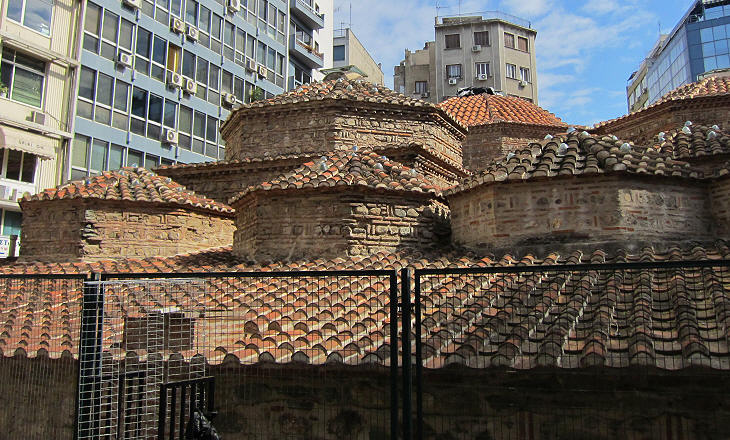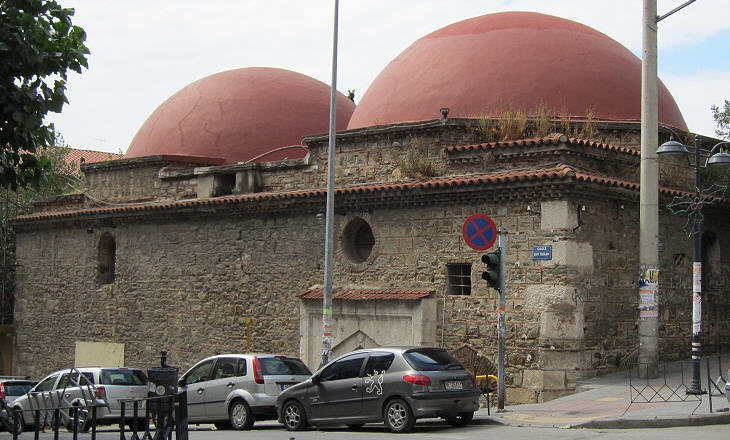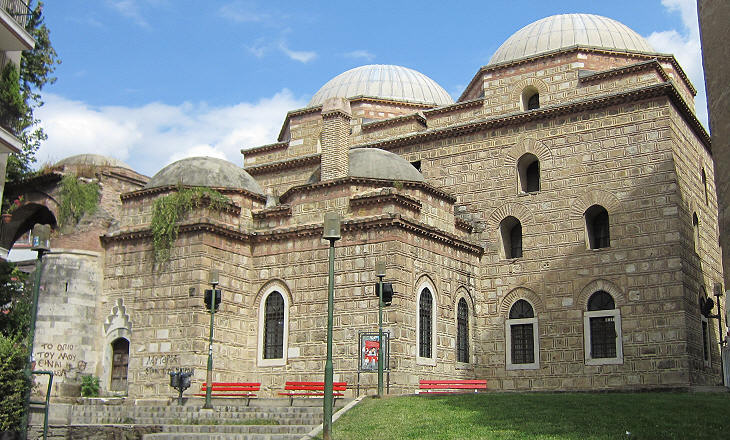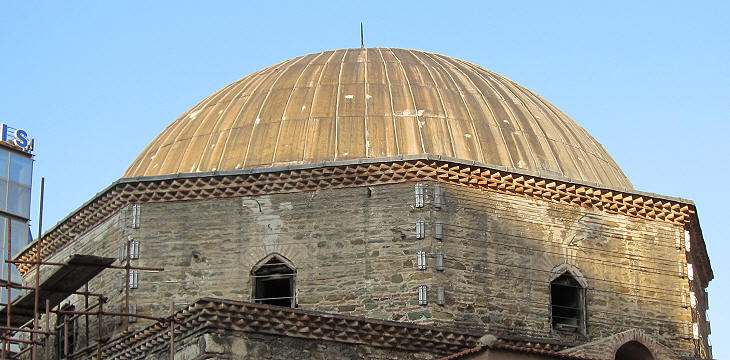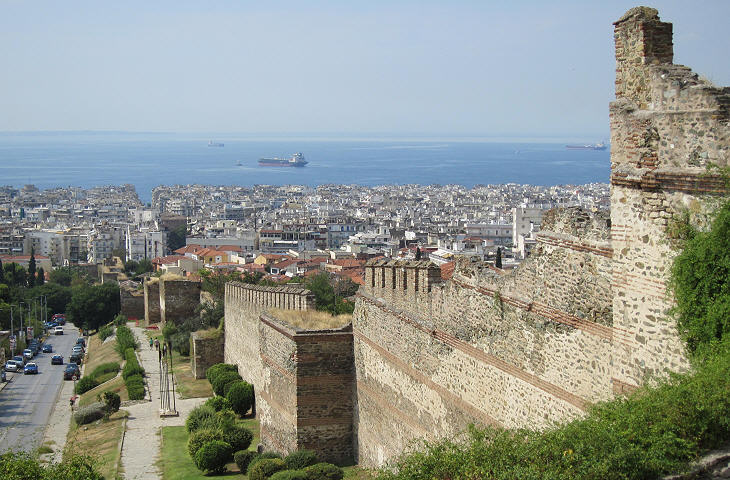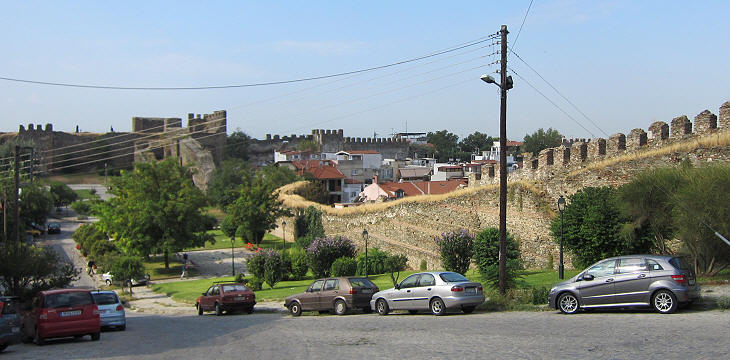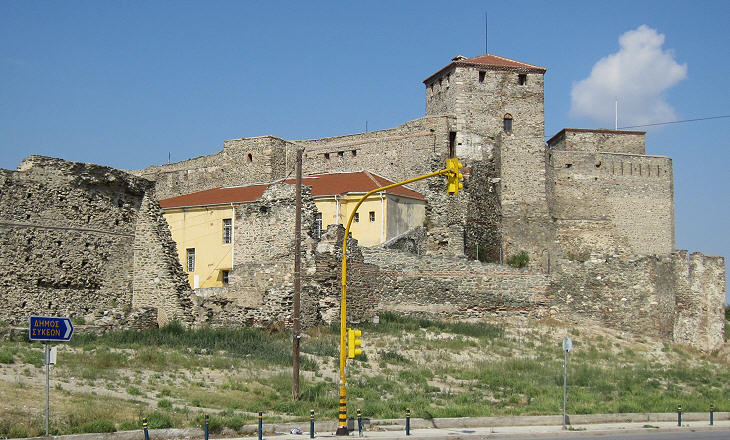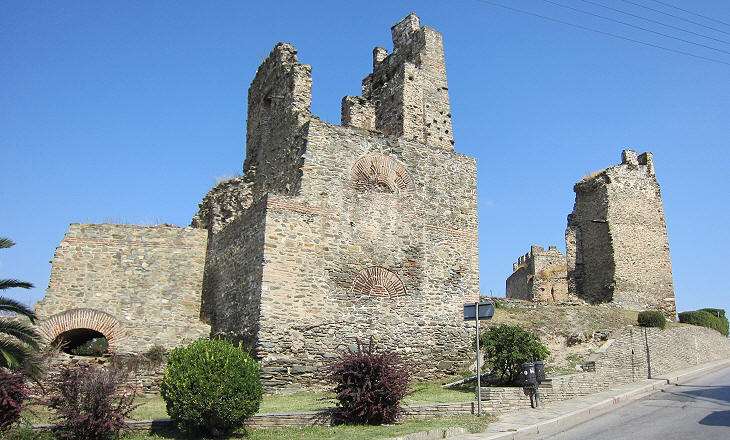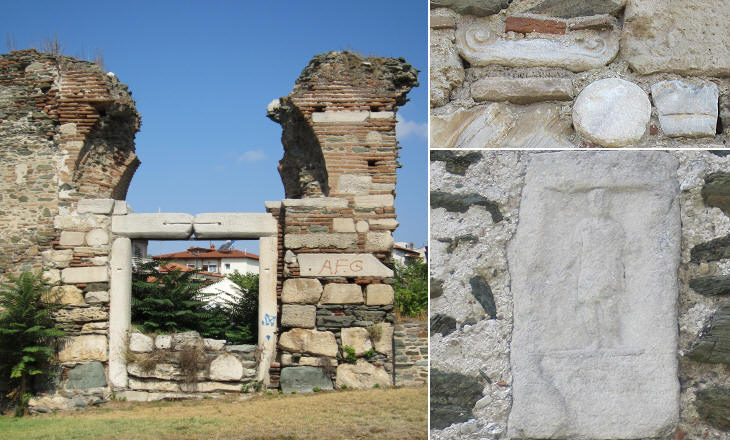  What's New! Detailed Sitemap All images © by Roberto Piperno, owner of the domain. Write to romapip@quipo.it. Text edited by Rosamie Moore. Page added in November 2010. |
 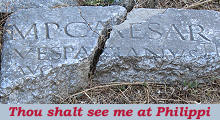 - Ottoman Thessalonica - Ottoman Thessalonica(inscription at Philippi) In 1430 Thessalonica was conquered by Sultan Murad II; at that time the Ottomans had already conquered most of the Balkans and the city became the main port of a large territory.
The Ottomans did not fear enemies on land after they defeated the Hungarian and Polish armies at Varna in 1444; on sea however they did not have a comparable strength; for this reason they protected the port of Thessalonica with a fortress located at its southern end where the city walls reached the sea. The key element of the fortress was a large circular tower which is now regarded as the symbol of the city. In 1826 the members of the Janissary corps in Thessalonica were imprisoned and then killed in the tower which for this massacre became known as the Blood Tower. Eventually the tower was painted white to make the massacre a forgotten event.
The design of the White Tower and of Dingirli Koulè, another large tower near the citadel, indicates that the Ottomans availed themselves of the experience of military architects who were familiar with Venetian fortresses. The string course or cordon is a characteristic feature of Italian fortifications.
The first large Ottoman building of Thessalonica was a hammam with separate sections for men and women. The baths were in use until 1968; they are located near the Roman market and their foundations probably rest on some ancient buildings.
When Sultan Murad II conquered Thessalonica after a long siege the city had a very reduced population, which was insufficient to fulfil its new role as key European port of the Ottoman Empire; towards the end of the XVth century Sultan Bayezid II welcomed the arrival of Jews from Spain and southern Italy as a means to increase the population and the importance of Thessalonica. The millet (nation) system was extended to the Jews giving their religious leaders jurisdiction on many matters; the city became the home of a very large Jewish community which in some periods was the majority of the population. In 1917 a fire which started near the citadel was pushed by strong winds towards the Jewish quarter which was located near the harbour; only the buildings entirely built of stone did not burn completely; after the fire the quarter was entirely redesigned and its Ottoman baths are almost the only memory of its old aspect.
The building is now used as a cinema, but it retains its old Turkish name: Yeni means new so Yeni Hamam means new baths; also this building is located in the central area of the ancient city. It is one of seven Ottoman buildings acknowledged by the Hellenic Ministry of Culture as deserving conservation.
The relatively limited number of Muslims living in the city and the fact that several large churches were turned into mosques explains why the Ottomans did not build large mosques in Thessalonica. Ishak Pacha Camii is located near Agios Dimitrios; it was built in 1484 before that large church was turned into a basilica; the prayer hall is covered by two domes, a typical feature of early Ottoman mosques and in particular of those of Bursa. The image shown in the background of this page is based on an Ottoman inscription placed at the entrance of the Rotunda (see page one) when that building was turned into a mosque.
This mosque is located near the Jewish quarter and the market of the city during the Ottoman rule; in 2010 it was being restored because its artistic and historical value was recognized by Greek authorities (the building was used as a cinema for many years). The mosque was built by the daughter of Hamza Bey, an Ottoman general whose tomb is near Cekirge in the environs of Bursa.
The walls which surround Thessalonica were most likely built in the IVth century after the 267 sack of Athens by the Heruli; the long stretch of well preserved walls between the White Tower and Dingirli Koulè was strengthened by the Byzantines in the XIVth century in the hope of keeping the city with a limited garrison.
The ancient acropolis was surrounded by walls also on the side towards the city; these walls were maintained by the Ottomans as protection in case of riots or revolts. Today the citadel (or Kastro) is a small haven of quiet when compared to the congested city centre.
Eptapyrgon, in Turkish Yedikule, means seven towers, the same name of the fortress/prison near the walls of Constantinople; the building is located on the highest point of the citadel and because of its threatening aspect it was looked at with terror by the inhabitants of the city.
In 1881 Thessalonica was the birthplace of Mustafa Kemal Ataturk, the founder of modern Turkey. Notwithstanding all its fortifications the Ottomans surrendered Thessalonica to the Greeks in November 1912 without much fighting; in March 1913 a madman assassinated King George I of Greece during a visit he made to the city; during WWI Thessalonica housed the headquarters of Anglo-French expeditionary forces; in 1923 the Muslim population was expelled while a large number of Greeks from Anatolia were relocated to Thessalonica; in 1941 the city was occupied by the Germans who in 1943 deported the Jews, very few of whom survived the concentration camps (you may wish to visit the website of the Jewish Museum of Thessalonica - external link); the city suffered heavy damage during WWII owing to Allied bombs. Today Thessalonica has a very modern aspect, elegant shops and cafés, a long seafront promenade and highly interesting museums showing its ancient and Byzantine past (you may wish to see the krater found in 1962 at Derveni, near Thessalonica). In 1988 its monuments were included in the UNESCO World Heritage List - external link.
Return to Roman Thessalonica or to Byzantine Thessalonica. Other pages of this section: Philippi Kavala Veria Kastoria Clickable Map of the Ionian and Aegean Seas with links to other locations covered in this website (opens in a separate window) SEE THESE OTHER EXHIBITIONS (for a full list see my detailed index). 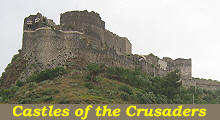 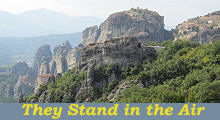 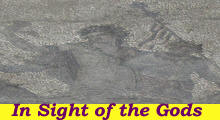 |
